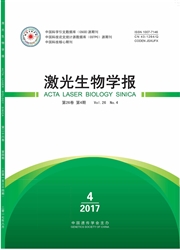
欢迎您!东篱公司
退出

 中文摘要:
中文摘要:
使用强脉冲光源(IPLs)作用于小鼠皮肤上,分别用普通显微镜、双光子显微镜(TPELSM)观察、分析在IPLs作用前后及不同能量密度下皮肤组织的结构。基于pennes生物传热方程,计算光子在皮肤组织中传输所吸收的热量引起组织升温达到的温度,与实验结果相吻合。
 英文摘要:
英文摘要:
Microscopy and TPELSM were used to study the changes of mouse skin before and after irradiation with Intense pulsed light source, that is observed and analyzed the Morphologic changes of rat skin. The numerical simulation of optical energy and temperature distribution in mouse skin were carried out, which was based on pennes biology passes heat equation, and then the results were compared with that of the animal experiments, and is consistent with the experiments.
 同期刊论文项目
同期刊论文项目
 同项目期刊论文
同项目期刊论文
 期刊信息
期刊信息
